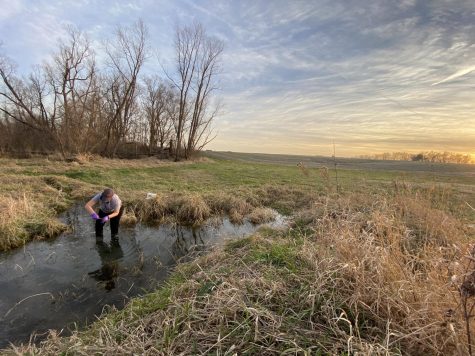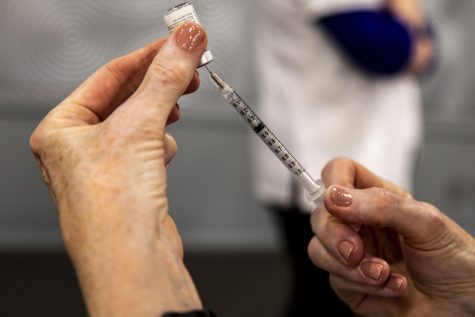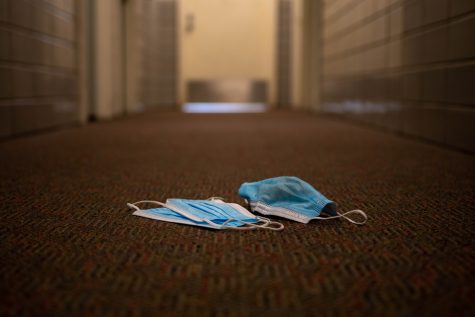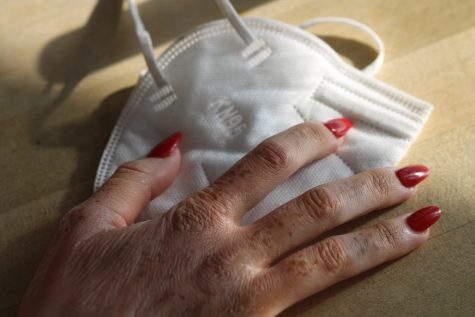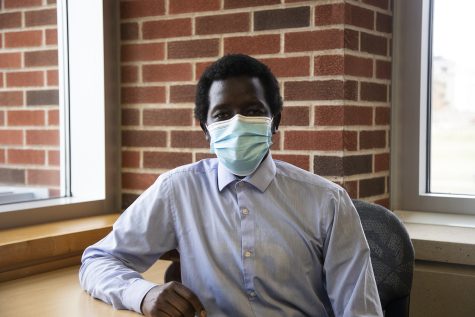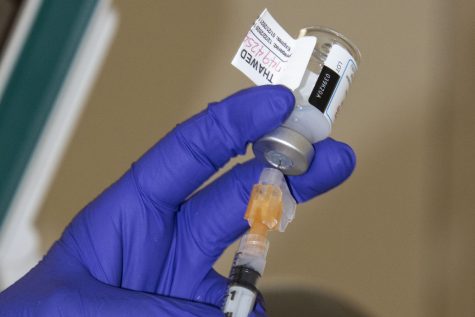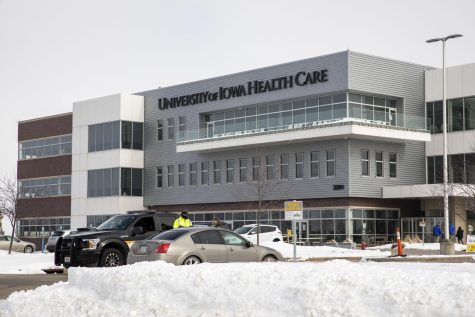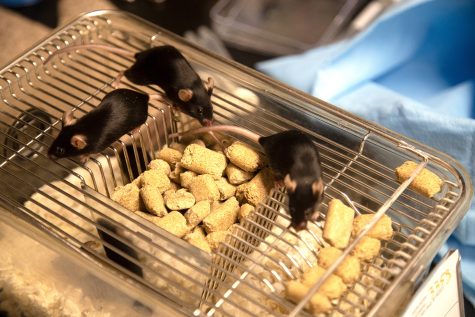Johnson County moves to a medium COVID-19 community spread amid increased cases
Johnson County is one of three Iowa counties that moved from a low to medium community level spread on Thursday. While cases are steadily increasing, the outbreak is still less severe than previous ones.
Photo Illustration by Gabby Drees.
May 1, 2022
Johnson County moved from a low to medium community spread level on Thursday as COVID-19 cases increased in Iowa. Poweshiek and Howard Counties also shifted to medium community levels, while the rest of Iowa remains at a low level.
Daniel Diekema, clinical professor of internal medicine-infectious diseases at the University of Iowa, said cases have been increasing over the past few of weeks, but not as steeply as they did in December 2021 and January 2022 during the initial omicron surge.
The recent increase is due to two subvariants of the omicron variant called BA.2 and its descendent, BA.2.12.1, Diekema said. Both make up over 95 percent of COVID-19 infections in the U.S. and are known for high transmissibility, but not severity.
As of April 23, BA.2 made up 68 percent of the COVID-19 cases in the region including Iowa, while BA.2.12.1 made up 25.9 percent.
Diekema said the omicron subvariants are generally better than previous variants at evading immune responses from prior infection and vaccination.
“The mutations in the gene that encodes for the spike protein were quite frequent, and so that protein was able to — [to] some extent — evade the immune response from previous infection and vaccination,” he said.
Johnson County Public Health Community Health Manager Sam Jarvis said that, while the department has seen a slight increase in cases over the course of April, hospitalizations and mortality rates have not risen quite as much.
“At the moment, it’s not a similar situation that we’ve seen in the past, where we’ve seen cases increase and then hospitalizations shortly follow,” Jarvis said. “It has been more of a stepwise increase instead of a surge.”
According to the Centers for Disease Control and Prevention website, there are currently 305 COVID-19 cases per 1,000 people in Johnson County, compared to 174 cases the previous week and 145 the week before that.
There have been 6.7 new admissions due to the virus per 1,000 people to county hospitals over the past seven days.
The CDC recommends the following to those living in medium level communities:
- If you are at high risk for severe illness, talk to your healthcare provider about whether you need to wear a mask and take other precautions
- Stay up to date with COVID-19 vaccines
- Get tested if you have symptoms
Diekema said he’s seen a lot of people with the idea that “we’ll be out of the pandemic” and be in an endemic situation with the virus.
An endemic situation would mean COVID-19 continues to circulate at low levels but does not disappear.
“[It] is still causing case rates to increase in a way that is not consistent with an endemic pathogen, so we aren’t out of the pandemic yet,” he said.
Diekema did say, however, like U.S. Chief Medical Adviser Anthony Fauci, that the U.S. is in a different phase of the pandemic, largely due to the protections provided by previous infections and vaccinations, leading to fewer hospitalizations and deaths.
While COVID-19 infections have spiked in Iowa over the past few weeks, the nationwide spike began a bit earlier, he said. The BA.2 variant first appeared in the Northeastern states and did not arrive in the Midwest until a bit later.
As for prevention measures, Jarvis said Johnson County will continue to encourage people to get vaccinated as soon as possible.
Jarvis said he encourages those who continue physical distancing and mask-wearing in public spaces to do so, especially to protect their family, friends, and colleagues who might be immuno-compromised or susceptible.
Diekema also stressed the importance of vaccines and booster shots as well as medications available to those who are in the early stages of infection.
“If you develop symptoms, you need to get tested promptly because there are medications that can reduce your risk of having a severe infection, but those need to be given within the first five days of symptoms,” he said.
Diekema said even a mildly infected person can get long-COVID-19 symptoms that can be extremely debilitating.
“Until we learn more about some of these manifestations of COVID-19, it’s good to try to protect yourself from infection,” he said. “One way to do that is to be vaccinated, and, like I said, wear masks in indoor settings, whenever there are elevated rates of infection in the community.”






